In their guest blog, student writers Whitney Dykehouse and Marcelina Kiszkiel explain how Senior Design students help companies tailor materials in response to the pandemic.
From the masks we wore to attend face-to-face classes on campus to the gloves we keep on while we push our grocery carts, the COVID-19 pandemic has introduced numerous new tools and practices into our daily lives that we use to stop the spread of the virus. Since the start of the pandemic, we have seen all sorts of new ideas arise for mask and glove designs to be more comfortable, effective, and even fashionable. However, the usefulness of all these products comes down to the incorporation of the right materials designed to protect us from contact with harmful microbes.
Materials science and engineering students Anna Isaacson, Sidney Feige, Lauren Bowling and Maria Rochow teamed up for their Senior Design project to find a new tool to prevent the spread of viruses and bacteria. The Michigan Technological University team is researching the possibilities of making copper alloy a more accessible, affordable and appealing material for building high-touch surfaces (such as doorknobs or tabletops) due to its naturally antimicrobial properties.
Currently, these alloys can reduce the rate of bacterial contamination by up to 99.9% on a surface within two hours of exposure. The goal of this project is to improve the effectiveness of the alloy in reducing both bacterial and flu viruses within a shorter amount of time. Overall, the team is striving to create a product that is appealing to both manufacturers and consumers, meaning their ideal copper alloy will be lightweight, low-cost and color customizable.
Copper Surfaces
Copper alloys naturally kill viruses, bacteria, mold and fungi. When these microbes make contact with a copper surface, copper ions tear down the cell wall and flood into the cell, effectively killing the microbe. Copper is also one of the few materials officially recognized for having antimicrobial properties by the Environmental Protection Agency (EPA).
However, copper is also a heavy and expensive material. And, consumers typically don’t find copper’s rustic color appealing, preferring the appearance of silver materials such as steel. These factors can make it difficult for manufacturers to produce large quantities of products made entirely from copper. At the same time, the antimicrobial ability of an alloy significantly decreases if its composition is less than 67% copper, meaning a surface would need a significant amount of copper within it to effectively fight off microbes.
To address these challenges, the team has been researching the possibility of combining other materials with copper to create an alloy that retains copper’s antimicrobial properties while minimizing the cost and weight of the alloy as a whole.
Coextrusion to Combine Materials
The team is able to combine multiple materials into a single alloy through the process of coextrusion. This process combines two materials, with one making up the interior of the alloy while the other is coextruded to coat the outside. The team describes the process as playing with a Play-Doh mold — you can insert multiple colors of Play-Doh to create a new shape composed of both original materials.
One of the materials the team has considered for coextrusion is aluminum, which is lightweight and inexpensive. However, aluminum and copper have differing flow stresses, which is the level of stress required to break down a material to allow it to flow. Aluminum flows much more freely than copper at lower temperatures, making it unsuitable for coextrusion. So, the team has been investigating the potential of using AL-6063, an aluminum alloy with a higher melting point.
The team is also investigating brass, which is an alloy composed of copper and zinc. Brass has a high copper content, and is also much stronger than pure copper, which makes it less susceptible to corrosion and cracking.
Classroom to Foundry
Isaacson, Feige, Bowling and Rochow are the Michigan Tech students behind the copper alloy Senior Design project. Through experiences within the Department of Materials Science and Engineering (MSE), they developed the skills necessary to work together developing the alloy.
MSE is the study of materials, from metals to plastics, which are frequently used in our everyday lives. “We call it the hub of engineering,” said Isaacson. “You can’t build things or engineer things without having the materials to do so. So, we’re here to advance that field for other engineers.”
Each of the team members began in different departments. Feige started in chemical engineering, Rochow began in biomedical engineering, Isaacson began in pre-medical, and Bowling began in general engineering with an interest in chemical engineering. They each discovered that MSE was more aligned with their interests, especially the focus on manipulating chemical and atomic structures to develop products.
“When you think, ‘Oh, I like chemistry — OK, chemical engineer.’ But they’re more processing,” said Bowling. “Whereas we’re more, ‘How can we manipulate it on the atomic scale to get it [to do] what we want it to do?’”
“The whole manipulation of the atomic structure really appealed to me,” said Rochow.
The copper alloy project is one of many the team members have worked on that provide hands-on experiences with real world applications. The team is especially excited to create a new product they developed entirely together. Although many engineers develop products, MSE students have the unique opportunity to manipulate chemical structures that influence the state of the final product they present.
“We’re very much a hands-on, get stuff done, very direct department,” said Feige.
The department has also allowed the team members to participate in fun activities such as Foundry Fun Days, where students have used the MSE foundry to create everything from cast-iron pans to Thor’s hammer. Multiple team members have also been able to travel and participate in bladesmithing competitions.
The team feels that the range of academic and extracurricular opportunities the MSE department provides has given them unique skills and experiences that have aided in their professional development.
“You take classes in all realms of things,” said Isaacson. “From math to chemistry, to physics, to electricity.”
“We end up with a wide range of applicable knowledge,” said Feige. “So, we can take our degree and go in infinite ways with it.”
Bowling hopes to take her experiences and apply them to work with NASA. Isaacson is interested in working within the marine or defense industries. With MSE experiences, students can work in a variety of other industries as well, including plastics, metals and ceramics.
Being part of a smaller department, MSE students also interact more with faculty. The department feels like a family due to its small size and everyone knows each other well.
“You will start working in the foundry and pouring metal in the beginning of your second year,” said Feige.
Due to their unique experiences and the support they’ve received from the department, the team is prepared to take on the challenge of making copper alloys a more accessible tool in response to the COVID-19 pandemic.
Michigan Technological University is an R1 public research university founded in 1885 in Houghton, and is home to nearly 7,500 students from more than 60 countries around the world. Consistently ranked among the best universities in the country for return on investment, Michigan's flagship technological university offers more than 185 undergraduate and graduate degree programs in science and technology, engineering, computing, forestry, business, health professions, humanities, mathematics, social sciences, and the arts. The rural campus is situated just miles from Lake Superior in Michigan's Upper Peninsula, offering year-round opportunities for outdoor adventure.
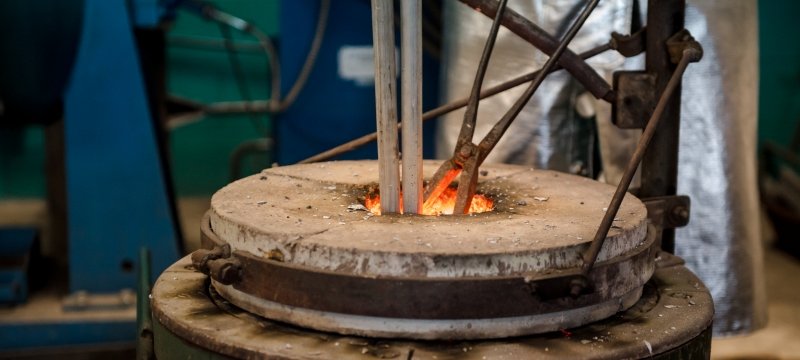

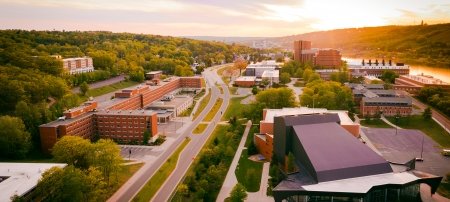
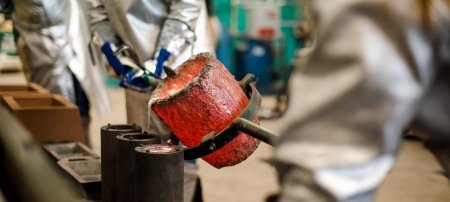
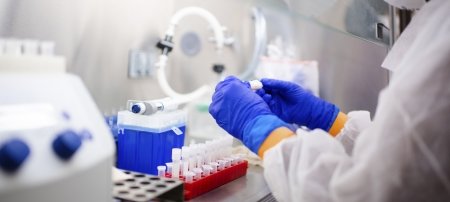
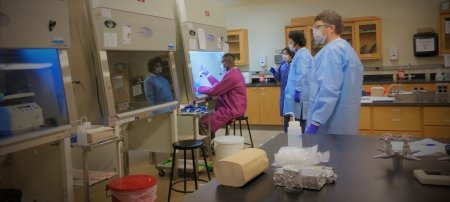
Comments